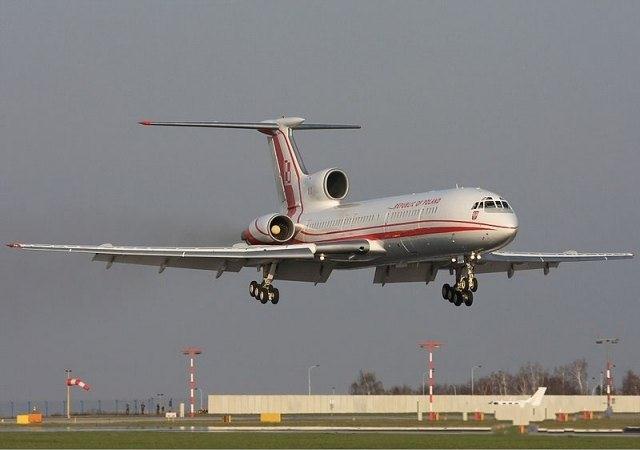The biggest plane crashes in history are truly impressive. Their victims were unable to do anything to save their lives. Having boarded the aircraft from this list, they did not leave themselves a single chance to survive. Most plane crashes were caused by human factors.

The Los Rodeos airport plane crash was an aviation accident (crash) that occurred in Tenerife, Canary Islands, at 17:06:50 local time on March 27, 1977. The collision between two Boeing 747 aircraft killed 583 people. This disaster remains the largest in terms of the number of victims in the entire history of aviation (not counting the terrorist attack of September 11, 2001).
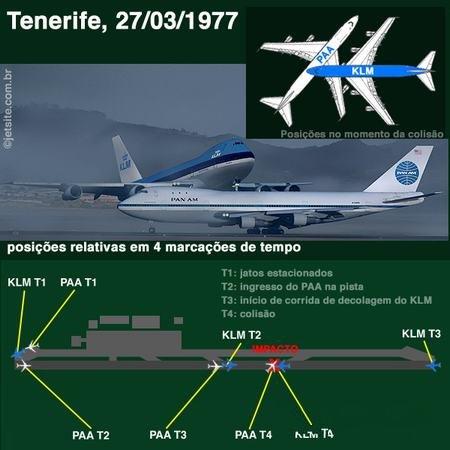
On August 12, 1985, a Japan Airlines Boeing 747SR, registration number JA 8119, on JAL Flight 123, crashed near Mount Takamagahara, Ueno Village, Gunma Prefecture, Japan, 100 km from Tokyo.
This is the second largest disaster in the history of aviation after the tragedy on the island of Tenerife (not counting the terrorist attack of September 11, 2001) and the largest disaster of a single aircraft. 15 crew members and 505 passengers were killed. Only 4 people survived (all were women): 24-year-old Yumi Ochiai, an employee of Japan Airlines, 34-year-old Hiroko Yoshizaki with her 8-year-old daughter Mikiko, and 12-year-old Keiko Kawakami. The latter was found sitting on a tree.

Iran Flight 655 (IR655) is a commercial passenger flight operated by Iran Air between Bandar Abbas, Iran and Dubai, United Arab Emirates. On July 3, 1988, Airbus A300B2-203 flight IR655 was shot down over the Persian Gulf by a missile fired from the US Navy guided missile cruiser Vincennes. 290 people died, including 16 crew members, and 66 children were among the passengers. At the time of the missile launch, the cruiser Vincennes was in Iranian territorial waters.
The US government said the Iranian plane was mistakenly identified as an Iranian Air Force F-14 fighter jet. The Iranian government, however, maintains that Vincennes deliberately attacked a civilian aircraft.
(Photo shows a rocket launch)

November 12, 1996 - near Charki Dadri airport (Delhi), a Boeing 747 of Saudi Arabian Airliners and a cargo Il-76 of Air Kazakhstan collided in the air. 312 people died in Boeing and 37 in IL. To date, this is the largest accident of two aircraft in the air.
Experienced Indian air traffic controller Dutta supervised the flight of both aircraft. The commander of the Il-76, Cherepanov[2], received a warning about a Saudi airliner located nearby, but no instructions were given in this regard. For some unknown reason, the Kazakh plane descended to an altitude of 14 thousand feet; the Boeing 747 was at the same altitude at the same time. At 18:41, Datta's controller saw dots indicating airliners meet on the radar, which could mean that one of them passed over the other, but after that both planes stopped communicating and disappeared from the radar's visibility range. The dispatcher tried to call the planes for some time. As it turned out later, 75 kilometers southwest of Delhi, both planes collided and crashed to the ground. There was no one left alive. A Kazakh plane crashed into the middle of the Saudi fuselage. The planes were traveling at a speed of about 500 kilometers per hour, and their collision was 700 times stronger than the collision of two cars. Immediately after the collision, the Boeing caught fire and began to rapidly disintegrate while still in the air. Planes with a total weight of more than 500 tons fell to the ground, their parts burned for more than four hours, at a distance of 8 kilometers from each other. A crater with a diameter of 100 meters was formed at the crash site.
(Pictured is an Il-76MD aircraft from Air Kazakhstan, tail number UN-76435)
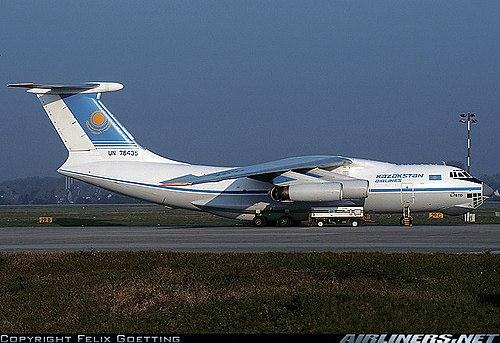
On July 25, 2000, during takeoff at Paris Charles de Gaulle Airport, a piece of debris from an American Continental Airlines DC-10 aircraft hit the tire of an Air France Concorde taking off, which was beginning an intercontinental flight from Paris to New York. The tire burst on takeoff, a piece of reinforced cord flew into the engine and ignited first one, then the second engine of the left wing. The thrust of the two engines of the right wing was not enough; the plane, fully loaded with 119 tons of fuel, crashed to the ground three minutes after takeoff. All on board (109) and 4 people in a suburban hotel were killed. The largest disaster of a supersonic aircraft (and the only Concorde disaster).
(The photo shows a still frame from the only video recording of the fatal takeoff)
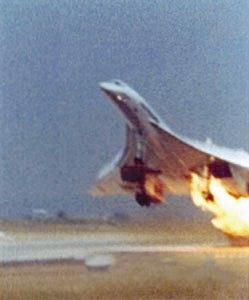
September 11, 2001 - one Boeing crashed into the north tower of the World Trade Center in New York, the second into the south tower of the World Trade Center, the third into the Pentagon, the fourth crashed. According to official data, about three thousand people died in the two WTC buildings alone. The largest number of passenger airliner crashes in one day, the largest number of victims in one plane crash, the largest number of victims in one terrorist attack in the world.
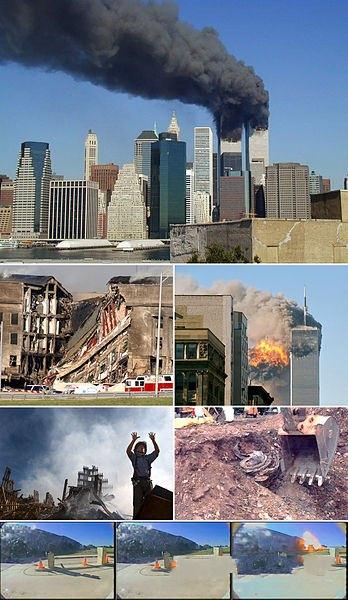
July 27, 2002 - during an air show at the Sknilov airfield near Lvov, a Su-27 plane fell into a crowd of spectators. At least 77 people died, including 28 children. Worst air show disaster.
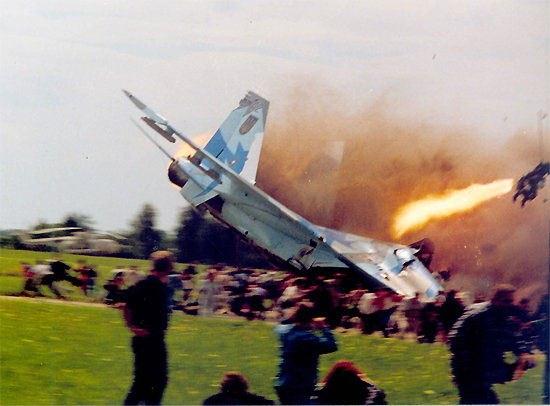
August 19, 2002 - as a result of a missile attack by Chechen militants over Khankala (Chechen Republic), a transport Mi-26 of the Armed Forces of the Russian Federation was shot down, which was aimed at a minefield. 127 people died. The largest helicopter crash, the largest disaster in the history of military aviation of the Russian Federation.
Developments
On August 19, at approximately 16:10 Moscow time, a Mi-26 helicopter belonging to the Army Aviation of the Ground Forces took off from the Mozdok airfield and headed for the base in Khankala. On board were military personnel returning to their place of duty after leave, as well as contract soldiers and conscripts flying to Chechnya to replace colleagues. Due to bad weather in the previous days, a fairly large number of military personnel had accumulated in Mozdok, waiting to fly to Chechnya. For this reason, the helicopter was heavily overloaded.
At 16:54, the Mi-26 was several kilometers from the Khankala airfield and was performing maneuvers to land. At this time, the crew commander, Major Oleg Batanov, reported to the ground that he heard a bang in the area of the right engine and received a warning from the onboard systems about a fire. Fearing that the fire would spread to the second main engine, Batanov urgently began to descend.
During an emergency landing, the Mi-26 hit the ground with its tail and the car fell apart. The servicemen who were at the door managed to jump out before the helicopter caught fire. The crew also evacuated safely - they were in the cabin, which was practically undamaged by the impact. However, by a tragic coincidence, the landing was carried out directly on a minefield protecting the base in Khankala from militant attacks. For this reason, extinguishing the burning helicopter was impossible, and evacuating the wounded was difficult. After the sappers made several passes in the minefield, there was nothing left to extinguish.

The plane crash over the Atlantic Ocean was the worst air disaster in the history of Air France, which occurred on June 1, 2009. An Airbus A330 flying from Rio de Janeiro to Paris crashed into the Atlantic Ocean. 228 people died. In the Brazilian state of Rio de Janeiro, three days of mourning were declared on June 1, and in France, a funeral service was held at the Cathedral of Notre Dame de Paris on June 3, which was attended by the country's President Nicolas Sarkozy. The exact cause of the disaster is still unknown.
(The photo shows the same plane.)
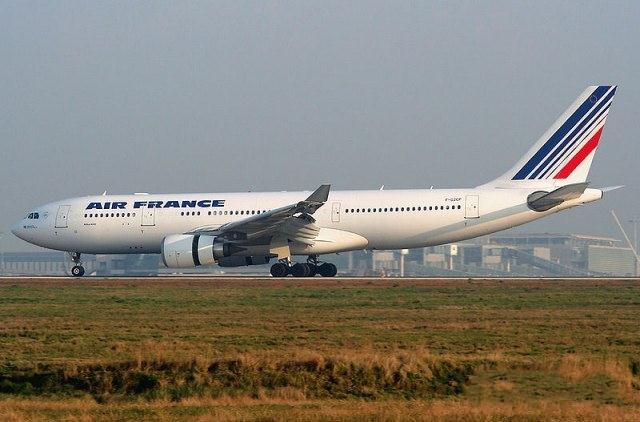
The plane crash in Smolensk on April 10, 2010 was an aviation accident (catastrophe) that occurred with the presidential Tu-154 aircraft of the Polish Air Force during landing at the Smolensk-Severny airfield in heavy fog. The disaster killed everyone on board - 88 passengers and 8 crew members, including Polish President Lech Kaczynski, his wife Maria Kaczynski, famous Polish politicians, almost the entire high military command, public and religious figures. This is the largest in terms of the number of victims among plane crashes in which top officials of the state were killed. President Kaczynski was heading to Russia on a private visit at the head of the Polish delegation to mourning events on the occasion of the seventieth anniversary of the execution of Polish officers in the Katyn forest.
According to the results of the IAC investigation, all aircraft systems were working normally before the collision with the ground; due to fog, visibility at the airfield was below acceptable for landing, of which the crew was notified.
On the picture:
Tu-154M of the President of Poland at Prague airport 39 hours before the crash in Smolensk (April 8, 2010)
ALL! Please don't kick too hard. First release!
